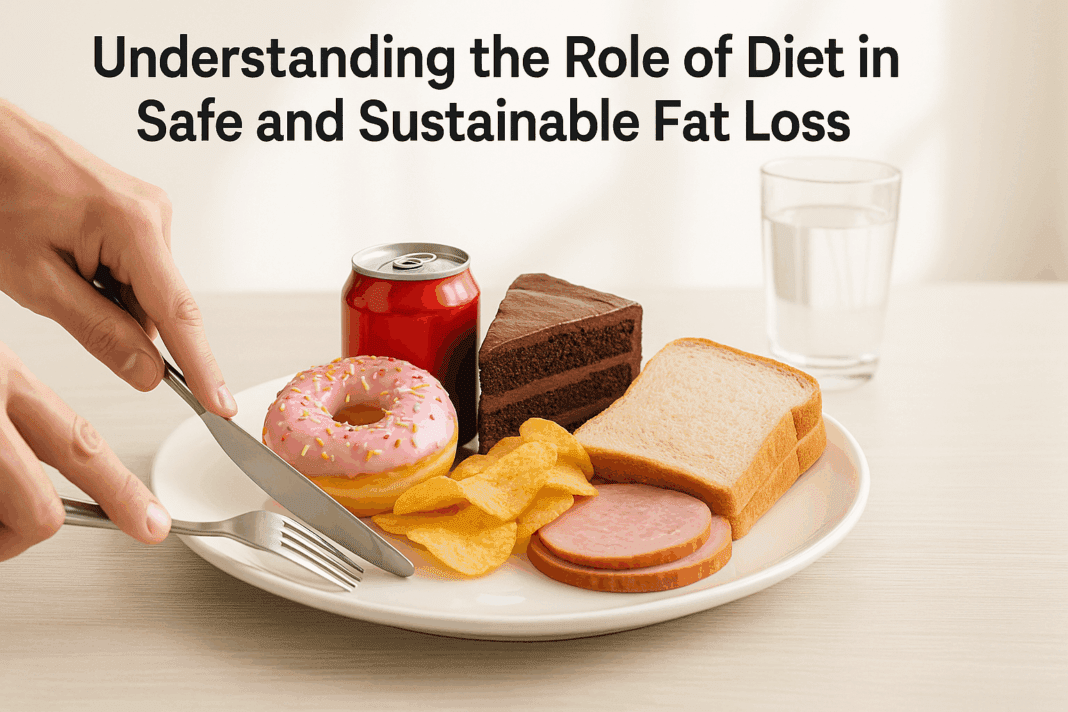Understanding the Role of Diet in Safe and Sustainable Fat Loss
When it comes to achieving healthy and sustainable weight loss, what you choose not to eat can be just as important as the foods you prioritize. While popular diet trends often spotlight superfoods and meal plans, they tend to overlook a foundational truth: eliminating the right foods can significantly accelerate fat loss and improve metabolic health. For individuals seeking to reduce overall body fat—and particularly those targeting abdominal fat—being mindful of the foods to avoid to lose weight is critical.
You may also like: Expert-Backed Weight Loss Tips for a Healthier Lifestyle: What You Need to Know for Long-Term Weight Control and Wellness
Scientific evidence consistently shows that certain foods not only contribute to weight gain but also make it more difficult to maintain a calorie deficit, regulate hunger hormones, and support fat oxidation. In other words, the wrong foods don’t just add calories—they disrupt your body’s natural weight management systems. The phrase “foods to avoid for weight loss” is more than a diet cliché; it represents a scientifically backed principle with practical implications for anyone working to improve their health.
At the intersection of nutritional science and behavioral psychology lies an important realization: removing key dietary obstacles—such as ultra-processed snacks, sugar-laden beverages, or hidden sources of saturated fat—can produce measurable changes in energy balance, insulin sensitivity, and long-term body composition. This article explores the most impactful fat loss foods to avoid, backed by doctor-approved insights and strategies grounded in real-world application and medical accuracy.
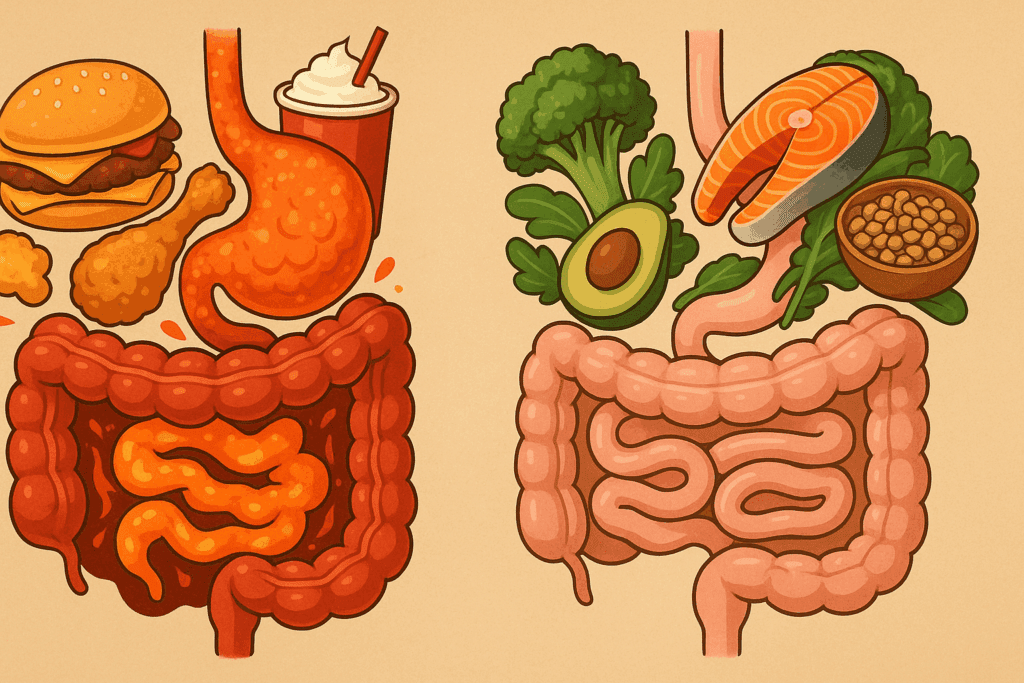
Why Certain Foods Sabotage Fat Loss: The Science Behind Weight Gain
Before diving into the specific foods to stay away from to lose weight, it’s important to understand why some foods inherently oppose weight loss efforts. Not all calories are created equal. A calorie from soda behaves very differently in the body than a calorie from salmon or spinach. While calorie intake still matters, the metabolic and hormonal impact of food quality is equally—if not more—significant.
Foods high in refined sugar, trans fats, or ultra-processed ingredients can increase insulin resistance, disrupt gut microbiota, and promote chronic low-grade inflammation. These physiological changes contribute to weight gain and make it harder to lose fat, especially around the midsection. When evaluating foods to avoid to lose belly fat, consider how these items influence your body’s ability to burn fat, regulate blood glucose, and manage hunger cues.
Additionally, many of the most problematic foods for weight loss tend to be hyper-palatable—engineered to override satiety signals and drive overconsumption. This is one reason why foods to avoid when trying to lose weight often share characteristics like high calorie density, low fiber content, and added sweeteners or emulsifiers. The more you consume these items, the harder it becomes to listen to natural hunger and fullness cues.
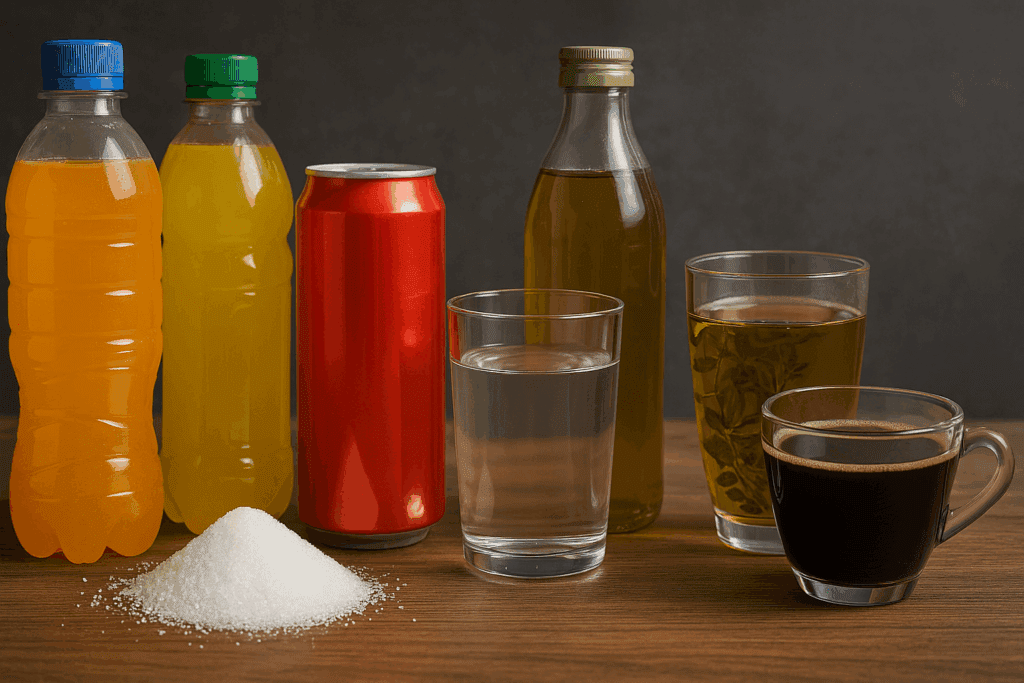
Sugary Beverages: A Hidden Culprit in Persistent Weight Gain
Despite being liquid, sugary beverages are far from harmless. In fact, they’re among the top foods to cut out to lose weight—though technically classified as drinks, their effect on the body mimics that of high-calorie, low-nutrient foods. Sodas, energy drinks, sweetened iced teas, and even fruit juices stripped of fiber flood the bloodstream with glucose and fructose, spiking insulin and promoting visceral fat storage.
What makes sugary drinks particularly dangerous is their failure to satisfy appetite. Research shows that calories consumed in liquid form do not register the same satiety response as solid foods, leading to greater total daily calorie intake. This is why cutting out sugary beverages is often one of the first interventions doctors recommend for patients struggling with weight.
Consuming these beverages regularly also increases the risk of developing metabolic syndrome, type 2 diabetes, and fatty liver disease. If you’re evaluating what not to eat to lose weight, replacing sweetened drinks with water, herbal teas, or black coffee is a powerful first step. It’s a small change with a significant metabolic payoff, especially for those aiming to lose fat safely.
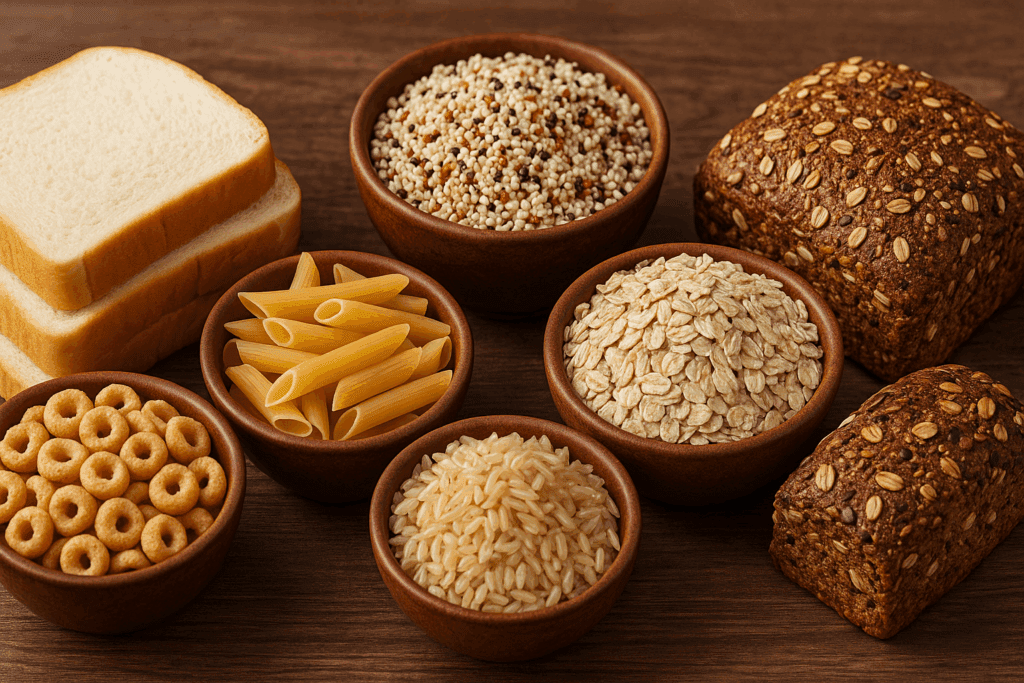
Refined Grains and White Bread: Empty Carbs That Derail Weight Goals
Refined carbohydrates are among the most deceptively harmful components of the modern diet. Foods like white bread, white rice, traditional pasta, and many breakfast cereals are stripped of their fiber, vitamins, and minerals during processing. The result is a fast-digesting, high-glycemic food that spikes blood sugar and leads to rapid energy crashes and rebound hunger.
For individuals focused on long-term fat reduction, these foods to avoid when losing weight represent a major obstacle. They fail to support satiety, contribute little to muscle preservation or metabolic rate, and are often consumed in large portions. Moreover, refined grains are frequently paired with added fats and sugars—think buttered toast, pastries, or pizza crust—compounding their negative impact on weight.
When your goal is to create a diet that promotes fat loss without sacrificing health, it’s essential to replace refined grains with whole, fiber-rich alternatives like oats, quinoa, brown rice, and sprouted grain breads. This simple substitution supports blood sugar stability, improves digestive health, and facilitates the calorie control necessary for healthy weight reduction.
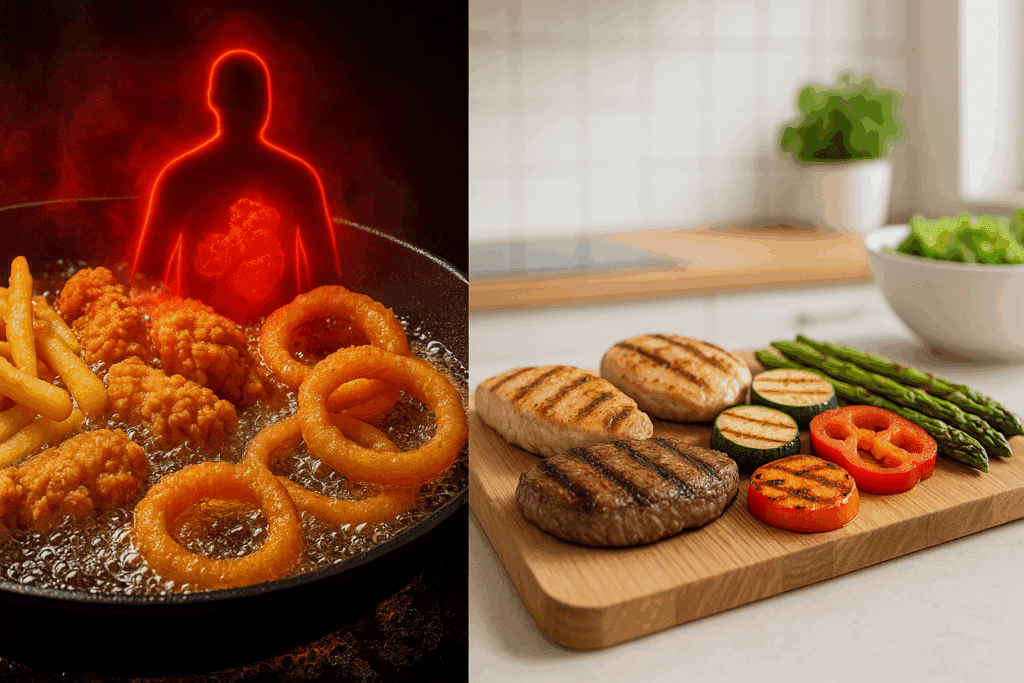
Fried Foods and Trans Fats: Inflammation and Calorie Density in Disguise
Fried foods—especially those prepared in hydrogenated oils—are a double-edged sword when it comes to fat loss. Not only are they calorie-dense, but they also often contain trans fats that wreak havoc on cardiovascular and metabolic health. From fast food french fries to breaded chicken and deep-fried appetizers, these items are high on the list of foods to avoid for weight loss.
One of the most troubling aspects of fried foods is their inflammatory impact. Trans fats increase C-reactive protein (CRP), a marker of systemic inflammation associated with obesity and insulin resistance. Chronic inflammation not only contributes to weight gain but also hinders the body’s ability to efficiently mobilize and burn stored fat. For individuals targeting abdominal fat, these are among the most urgent foods to avoid to lose belly fat.
The act of frying also alters the molecular structure of oils, making them more likely to oxidize and produce harmful free radicals. Over time, this oxidative stress can impair mitochondrial function, reducing the body’s ability to generate energy from fat. Doctors often advise patients to eliminate or sharply limit fried foods as part of a medically sound weight loss program.
Processed Meats and Sodium-Laden Foods: Appetite Disruptors in Disguise
Deli meats, bacon, sausages, and canned meats are often overlooked in discussions about foods to avoid when trying to lose weight. However, these items contribute to water retention, high blood pressure, and weight gain—especially when consumed regularly. The problem isn’t just the calories; it’s the high sodium content and added preservatives that alter your body’s fluid balance and hormonal signaling.
Processed meats are also typically low in beneficial fiber and high in saturated fat, making them a poor choice for satiety and cardiovascular health. While lean protein is essential for weight loss, not all proteins are created equal. Choosing unprocessed sources such as grilled chicken, tofu, legumes, or fish offers more nutritional value without the harmful side effects.
Excess sodium doesn’t just cause bloating; it also increases thirst, which many people misinterpret as hunger. This can lead to overeating and poor food choices, especially in the context of processed meals. In reducing your intake of foods to stay away from to lose weight, minimizing processed meats and high-sodium packaged products should be a top priority.
Baked Goods and Desserts: Blood Sugar Spikes Wrapped in Temptation
Cookies, cakes, muffins, doughnuts, and pastries may be comforting in the moment, but they undermine your weight loss efforts in ways that go beyond simple calorie intake. These items are among the most common fat loss foods to avoid due to their combination of refined flour, sugar, and saturated fat. This trifecta of ingredients triggers dopamine release, encouraging repeat consumption and emotional eating behaviors.
From a physiological perspective, baked desserts create a cascade of hormonal disruptions. They spike insulin, increase blood triglycerides, and cause sharp energy fluctuations—all of which make it harder to stay in a calorie deficit. These foods also promote fat storage, particularly in the abdominal area, making them especially problematic for individuals trying to lose belly fat.
What’s more, commercially produced baked goods often contain hidden trans fats, even when labeled “trans fat-free.” This loophole allows small amounts of harmful fats to accumulate over time. Reducing or eliminating these desserts not only supports fat loss but also improves lipid profiles, insulin sensitivity, and mood stability over the long term.
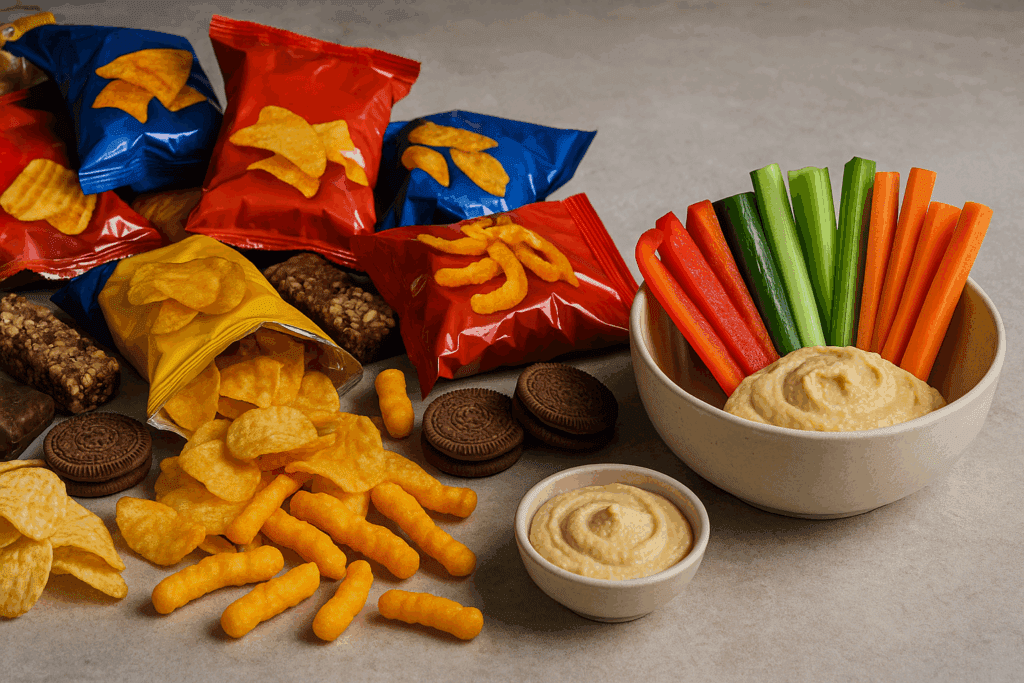
Ultra-Processed Snacks and Packaged Junk Food: Engineered to Sabotage
The food industry has perfected the art of designing snacks that override natural satiety signals. Chips, cheese puffs, pretzels, and sugary granola bars are crafted to be addictive, with carefully calculated ratios of salt, sugar, and fat. These foods to avoid when trying to lose weight are particularly dangerous because they are calorie-dense, low in fiber, and often consumed mindlessly.
Scientific studies have shown that ultra-processed snacks are associated with higher overall energy intake, increased fat accumulation, and greater waist circumference. They also alter the gut microbiome in ways that hinder metabolism and increase cravings. For individuals committed to evidence-based weight loss, avoiding these snack foods is essential.
Additionally, these products rarely provide the protein, fiber, or micronutrients necessary to support lean mass retention or hormonal balance during weight loss. Replacing them with nutrient-dense whole foods—such as raw vegetables with hummus or a boiled egg—can lead to better satiety, fewer cravings, and more effective fat loss over time.
Alcohol and Liquid Calories: The Invisible Barrier to Weight Loss
While often overlooked, alcohol is a significant contributor to stalled weight loss and fat retention. It’s not just the empty calories that matter—alcohol interferes with fat metabolism, increases appetite, and disrupts sleep patterns, all of which hinder fat loss. For this reason, alcohol is consistently included in medical recommendations for foods to avoid when losing weight.
When consumed, alcohol becomes the body’s preferred energy source, which means fat oxidation is temporarily halted until the alcohol is metabolized. This process, combined with the tendency for alcohol to lower inhibitions and increase cravings for unhealthy foods, creates a perfect storm for weight gain.
Many alcoholic beverages also contain added sugars, syrups, and mixers that further increase caloric load. Even seemingly harmless options like wine or craft beer can add hundreds of calories to your daily intake without contributing any real satiety. For anyone wondering what not to eat to lose weight, limiting or eliminating alcohol is one of the most overlooked but effective strategies.
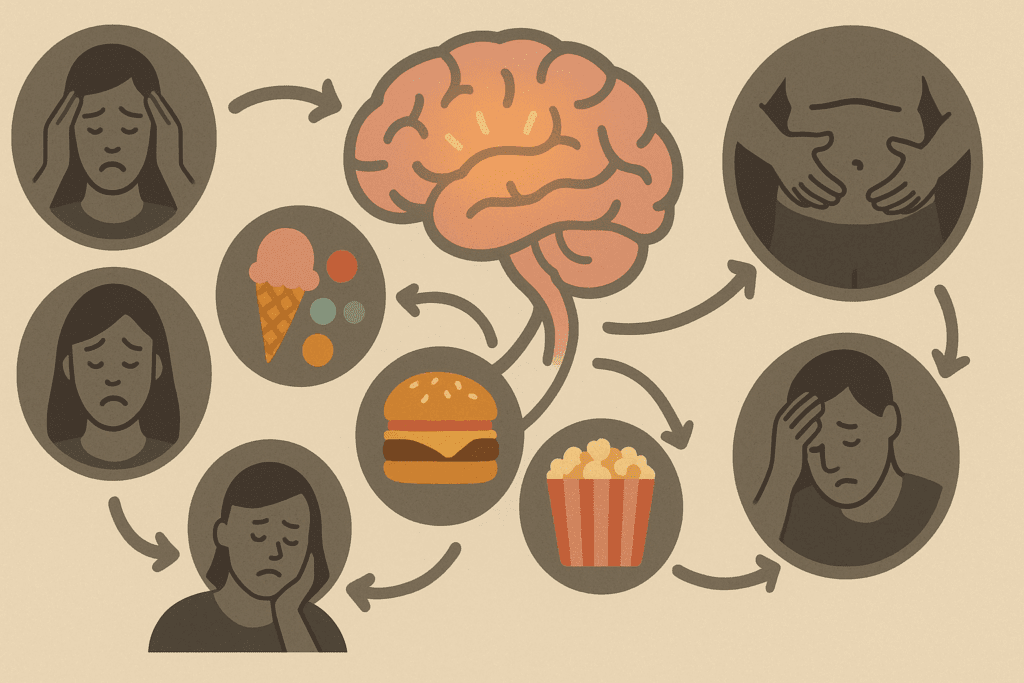
Emotional Eating Triggers: Foods That Hijack Your Brain Chemistry
In the pursuit of fat loss, it’s not only about which foods you consume, but why you consume them. Emotional eating is one of the most common barriers to effective weight loss, and many of the foods tied to this behavior—ice cream, candy, fast food, or buttery popcorn—are also among the foods to cut out to lose weight.
These comfort foods act on the brain’s reward system, offering temporary relief from stress, sadness, or boredom. However, the consequence is a habitual pattern that bypasses hunger signals and reinforces the very behaviors that lead to weight gain. Identifying these triggers is essential for creating a sustainable dietary plan.
Developing healthier coping mechanisms, such as walking, journaling, or deep breathing, can help interrupt the cycle of emotional eating. At the same time, removing trigger foods from the home environment can reduce temptation and support better choices. Replacing comfort foods with high-protein, nutrient-dense snacks can support both emotional stability and physical well-being.
Frequently Asked Questions (FAQ): What Not to Eat to Lose Weight – Expert Insights and Practical Advice
1. Can avoiding certain foods help with hormonal balance during weight loss?
Absolutely. Many of the foods to avoid for weight loss are known to negatively affect hormonal function, particularly those related to insulin and cortisol. Highly processed carbohydrates and added sugars, for instance, lead to spikes in insulin, which can promote fat storage and disrupt hunger regulation. Meanwhile, excess caffeine, alcohol, and processed fats can raise cortisol levels, making it more difficult to burn fat—especially abdominal fat. Choosing to eliminate fat loss foods to avoid isn’t just about calories; it’s also about restoring internal hormonal equilibrium, which plays a crucial role in sustained fat loss and long-term metabolic health.
2. How do social settings impact our ability to avoid the wrong foods for weight loss?
Social situations like parties, workplace lunches, and family gatherings often feature many foods to stay away from to lose weight, such as fried appetizers, sugary desserts, and processed snacks. The pressure to “join in” or avoid seeming rude can make it challenging to decline these options, even when you’re committed to your goals. One way to manage this is by eating a balanced, fiber-rich meal beforehand to reduce cravings, or by bringing a healthy dish to share. Practicing mindful eating and setting personal boundaries also help navigate environments filled with foods to avoid when losing weight, especially when emotional cues and social pressure are involved.
3. Are all “low-fat” and “diet” products safe when trying to lose weight?
Not necessarily. Many low-fat or “diet-friendly” foods are marketed as healthier options, but they often contain added sugars, artificial sweeteners, or sodium to compensate for the flavor lost when fat is removed. These additives can sabotage your weight loss efforts and may even increase appetite and cravings. In fact, many such products still qualify as foods to avoid to lose weight because they’re overly processed and disrupt natural satiety. Reading ingredient labels is key, as is choosing whole, minimally processed foods that are naturally low in calories and rich in nutrients. Trusting packaging alone can lead you to consume hidden sources of the very foods to cut out to lose weight.
4. What role does sleep play in managing cravings for fat loss foods to avoid?
Sleep plays a surprisingly significant role in determining which foods we crave and how our body processes them. Studies show that sleep deprivation increases ghrelin (the hunger hormone) and decreases leptin (the satiety hormone), leading to stronger cravings for high-calorie, high-sugar foods. This makes it harder to resist foods to avoid when trying to lose weight, particularly late at night when decision fatigue sets in. Additionally, poor sleep quality disrupts insulin sensitivity, which can lead to more fat being stored rather than burned. Establishing a consistent sleep schedule can make it easier to avoid the top foods to avoid to lose belly fat and improve your weight loss outcomes holistically.
5. Why do certain foods trigger binge eating behaviors, and how can we prevent this?
Some of the most problematic foods to avoid for weight loss are engineered to be hyper-palatable—meaning they are high in sugar, salt, and fat, which triggers dopamine release in the brain. This creates a feedback loop that mimics addictive behavior, making it difficult to stop once you’ve started. Binge eating often stems from emotional stress or restriction without proper nutritional replacement. The key to breaking the cycle is identifying your binge triggers and replacing them with nourishing alternatives that satisfy both physically and emotionally. Creating an environment free from binge-prone foods to stay away from to lose weight can help reset your brain’s reward system and support mindful eating habits.
6. Do certain food combinations hinder weight loss more than individual foods?
Yes, and it’s an often-overlooked aspect of dietary planning. Certain combinations—such as refined carbs and saturated fats—can worsen insulin spikes and lead to prolonged fat storage, even when portion sizes seem reasonable. Think of a cheeseburger with fries or a pastry with a creamy filling: these pairings compound the metabolic impact of foods to avoid when losing weight. Moreover, such combinations often have low fiber content, which means they don’t promote satiety. Paying attention to food pairings and emphasizing combinations that support digestion—like protein with vegetables or healthy fats with fiber—can help counteract the effects of fat loss foods to avoid and keep your metabolism on track.
7. How can stress-eating be managed when trying to avoid unhealthy foods?
Stress often drives individuals toward comfort foods—most of which fall into the category of foods to avoid to lose weight. These typically include sweets, fast food, and carb-heavy snacks that provide short-term relief through dopamine release but lead to long-term setbacks in fat loss. Addressing stress at its root is crucial; practices such as deep breathing, journaling, therapy, or even a short walk can help break the automatic link between stress and unhealthy eating. It’s also helpful to have nutritious “go-to” alternatives on hand, like Greek yogurt, dark chocolate in moderation, or air-popped popcorn. Recognizing the emotional cues behind eating helps reinforce long-term strategies for avoiding foods to cut out to lose weight.
8. Are there cultural or traditional foods that could unknowingly hinder weight loss?
Absolutely, and this can be particularly complex when trying to honor one’s heritage while pursuing better health. Many traditional cuisines include staple dishes that are fried, high in refined carbohydrates, or loaded with added oils or sugar. These can unintentionally include foods to avoid when trying to lose weight, even if they’re made at home and feel familiar. The solution isn’t to abandon cultural foods but to adapt them—for example, baking instead of frying, substituting white rice with quinoa, or reducing portion sizes while increasing the vegetable content. This way, individuals can avoid the more harmful components of what not to eat to lose weight without sacrificing cultural identity or enjoyment of food.
9. How can someone reintroduce previously “forbidden” foods after reaching their goal weight?
Once weight loss goals are achieved, it’s natural to want to reintroduce certain foods in moderation. However, it’s important to differentiate between balance and regression. Many foods to avoid when losing weight may not need to be eliminated forever, but they should be consumed mindfully and in a structured context—such as during a planned “treat” meal rather than in response to stress or boredom. It’s helpful to track how your body responds to reintroduced foods, particularly in terms of energy, digestion, and cravings. Ultimately, the goal is to develop a sustainable lifestyle where you continue to avoid the most problematic foods to lose belly fat, while allowing occasional indulgences that don’t derail your progress.
10. Are there any psychological strategies that help reinforce avoiding harmful foods long-term?
Yes, psychology plays a key role in developing sustainable dietary behaviors. Techniques such as cognitive behavioral therapy (CBT), habit stacking, and visualization can help reinforce the motivation to avoid foods to stay away from to lose weight. For instance, linking a healthy choice with a daily routine—like drinking water before each meal—can gradually make it automatic. Reflecting on your “why”—such as improved energy, mobility, or confidence—also reinforces long-term commitment. Accountability through journaling, coaching, or support groups provides structure and external motivation. These approaches help you internalize the importance of avoiding foods to cut out to lose weight and replace impulsive behaviors with conscious, empowering choices.
Final Thoughts on What Not to Eat to Lose Weight: A Doctor-Backed Strategy for Fat Loss Success
Understanding what not to eat to lose weight is more than a list of forbidden foods—it’s a strategic and science-backed approach to reclaiming metabolic health, improving hormonal balance, and achieving sustainable fat loss. From avoiding sugar-laden beverages and refined carbs to eliminating processed meats, baked goods, and alcohol, each decision to remove a detrimental food supports your body’s natural ability to burn fat and maintain energy balance.
This is particularly crucial for individuals focused on losing stubborn belly fat or managing conditions like insulin resistance, PCOS, or metabolic syndrome. By focusing on the most impactful foods to avoid for weight loss, you reduce inflammation, stabilize blood sugar, and regulate appetite—three core pillars of effective and safe weight management.
Remember, cutting out harmful foods is not about deprivation, but empowerment. It creates space in your diet for high-quality, nutrient-rich options that fuel your body and mind. Whether you’re just beginning your journey or fine-tuning your strategy, embracing a mindset of intentional, evidence-based eating is the most effective way to achieve long-term results. By thoughtfully eliminating the top foods to avoid when trying to lose weight, you create a foundation not just for fat loss, but for lifelong health and vitality.
Further Reading:
7 Foods You Shouldn’t Cut Out If You’re Trying to Lose Weight, According to a Dietitian


